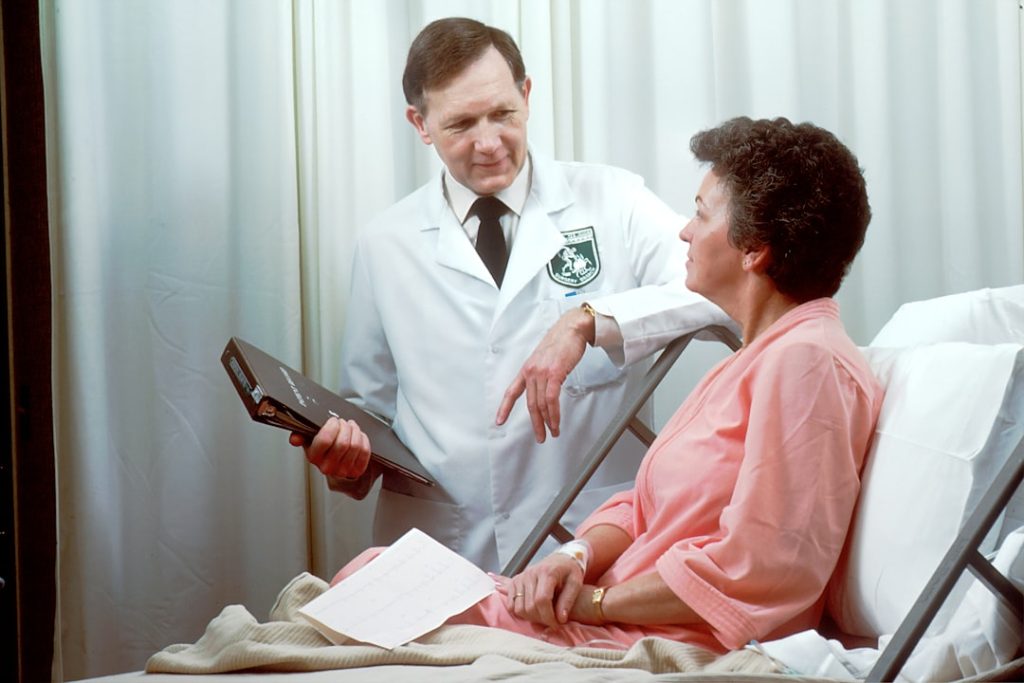Innovation is the lifeblood of progress. However, transforming groundbreaking research into market-ready products and services involves a complex journey. This is where Technology Transfer Offices (TTOs) come into play. These specialized entities bridge the gap between academia and industry, ensuring that innovative ideas do not remain confined to laboratories but reach the public, benefiting society at large.
In this article, we will delve into the challenges and opportunities that TTOs face, understand their role in the technology transfer process, and explore how they add value to innovation.
Understanding Technology Transfer Offices

A Technology Transfer Office is typically a department within a university or research institution responsible for managing the commercialization of technology developed through research. The primary aim is to protect intellectual property (IP) and facilitate the transfer of technology to the industry, thereby transforming research into viable products or services.
Defining the TTO Landscape
TTOs are found in many research-intensive institutions globally. They function as the bridge between academia and industry, ensuring that research with commercial potential is identified and leveraged.
Their structure and size can vary significantly, often influenced by the scale of the institution and the volume of research output. Some TTOs operate within a single institution, while others serve multiple organizations through regional or national frameworks.

Core Functions of TTOs
The core functions of TTOs include:
- Identifying and Protecting IP: TTOs identify potentially valuable innovations and protect them through patents, copyrights, or trademarks. This involves working closely with researchers to understand the uniqueness of their discoveries and the best ways to safeguard them.
- Licensing and Commercialization: They negotiate licenses with companies that can commercialize the technology. This may involve drafting licensing agreements, negotiating terms, and ensuring compliance with legal standards.
- Industry Collaboration: TTOs foster relationships between researchers and industry partners to facilitate collaborative projects. These collaborations can lead to co-development opportunities, funding, and accelerated innovation.
- Entrepreneurial Support: They assist researchers in forming startups based on their inventions. This includes providing mentorship, business planning support, and access to venture capital.
Strategic Importance of TTOs
TTOs not only support individual researchers but also contribute to the strategic goals of their institutions. They help in building a robust pipeline of innovations that can be commercialized, thereby enhancing the institution’s reputation and financial health.
In addition to commercialization, TTOs often engage in community outreach and educational activities. They educate researchers on IP rights, commercialization strategies, and the importance of translating research into societal benefits.
Global Impact and Reach
The influence of TTOs extends beyond their immediate institutions. Successful technology transfer can lead to global market penetration, influencing industries worldwide.
TTOs often collaborate with international partners, facilitating cross-border technology transfer and commercialization. This global reach is crucial for addressing worldwide challenges such as climate change, healthcare, and food security.
Challenges and Opportunities
Technology transfer is a complex process that comes with its own set of challenges and opportunities.
Challenges
Intellectual Property Management
One of the biggest challenges TTOs face is managing intellectual property. This involves not only securing patents but also maintaining them, which can be costly and time-consuming. The process requires a deep understanding of patent laws, both domestic and international, and a strategic approach to patent portfolio management.

Effective IP management also involves addressing potential legal disputes. TTOs must be prepared to defend their patents in court, negotiate settlements, or navigate licensing conflicts. This legal complexity requires a robust support system, including in-house legal teams or external legal counsel.
Market Readiness
Another significant challenge is assessing the market readiness of a technology. Not all innovations are market-ready, and determining the commercial potential can be difficult. TTOs often conduct market research, feasibility studies, and pilot programs to gauge the viability of a new technology.

Market readiness also involves understanding the competitive landscape. TTOs must identify existing solutions, potential competitors, and market gaps. This information is critical for positioning the new technology effectively and ensuring it meets market needs.
Funding
Securing adequate funding for the development and commercialization of technology is often a hurdle. Without sufficient financial resources, even the most promising innovations may never reach the market. TTOs must explore various funding avenues, including grants, venture capital, and industry partnerships.

Funding challenges also extend to sustaining the operations of the TTO itself. Many TTOs operate on limited budgets and must demonstrate their value through successful commercialization outcomes. This pressure can strain resources and affect long-term strategic planning.
Opportunities
Economic Growth
Successful technology transfer can significantly contribute to economic growth. It can lead to the creation of new industries, generate employment, and foster economic development. TTOs play a pivotal role in translating research into marketable products that drive economic activity.

Economic growth from technology transfer is not limited to direct commercialization. The ripple effects include increased investment in research, higher education funding, and the development of regional innovation ecosystems. These ecosystems attract further talent and investment, creating a virtuous cycle of growth and innovation.
Societal Impact
Technology transfer has the potential to bring about significant societal benefits. Innovations in healthcare, environmental sustainability, and other critical areas can improve the quality of life. TTOs facilitate the dissemination of these innovations, ensuring they reach the communities that need them most.

Societal impact also includes addressing global challenges. Technologies that improve energy efficiency, reduce carbon emissions, or enhance food security have far-reaching implications. TTOs enable these innovations to scale and address issues on a global stage.
Academic Prestige
Effective technology transfer can enhance the reputation of academic institutions. Successfully commercialized technologies can bring prestige and attract further research funding and talent. Institutions known for robust technology transfer programs are often seen as leaders in innovation.

Academic prestige from technology transfer also attracts partnerships. Industry collaborators, government agencies, and other research institutions are more likely to engage with universities that have a proven track record of commercialization success. This reputation can lead to new opportunities for research and funding.
The Technology Transfer Process

The technology transfer process is multi-faceted and involves several key stages.
Invention Disclosure
The first step in the technology transfer process is the invention disclosure. Researchers submit a detailed description of their invention to the TTO, outlining its potential applications and benefits. This step is crucial for capturing the innovation early and initiating the commercialization process.

Invention disclosure forms often require detailed technical descriptions, potential commercial applications, and any prior publications or disclosures. This information helps the TTO assess the invention’s novelty and commercial potential. Early engagement with the TTO can also provide researchers with guidance on protecting their IP.
Evaluation and Protection
The TTO evaluates the invention to determine its commercial potential. If deemed valuable, steps are taken to protect the intellectual property through patents or other forms of IP protection. This evaluation involves market analysis, competitive intelligence, and technical feasibility assessments.

Protecting the IP often includes filing patent applications, securing trademarks, or utilizing copyrights. The TTO works with patent attorneys to draft and file applications, ensuring the invention is legally safeguarded. This protection is critical for maintaining a competitive advantage and attracting industry partners.
Marketing and Licensing
Once the IP is protected, the TTO markets the technology to potential industry partners. This may involve negotiating licenses or forming partnerships to commercialize the technology. Effective marketing strategies include showcasing the technology at industry conferences, trade shows, and through online platforms.
Licensing agreements must be carefully crafted to balance the interests of the institution, the researchers, and the licensee. Terms such as royalty rates, exclusivity, and sublicensing rights are negotiated to ensure a fair and beneficial partnership. The TTO also monitors compliance with licensing terms to protect its IP rights.
Commercialization and Revenue Sharing
After successful licensing, the technology enters the commercialization phase. Revenues generated from the commercialization are typically shared between the institution, the inventors, and the TTO. This revenue-sharing model incentivizes researchers to engage in the technology transfer process.
Commercialization involves scaling the technology, manufacturing, marketing, and distribution. The TTO may continue to support the licensee with technical expertise, regulatory guidance, and market insights. Effective commercialization transforms the innovation into a product or service that delivers value to end-users.
Value Addition by TTOs
Facilitating Innovation
TTOs play a crucial role in facilitating innovation. By providing the necessary support and resources, they help researchers navigate the complex commercialization process. This support includes IP management, market analysis, business development, and access to funding.
Facilitating innovation also involves building an innovation culture within the institution. TTOs organize workshops, seminars, and training programs to educate researchers on commercialization strategies. This proactive engagement fosters a collaborative environment where innovation thrives.
Risk Mitigation
By managing IP and securing patents, TTOs mitigate the risks associated with technology commercialization. This protection is crucial for attracting industry partners and investors. Patents provide legal safeguards that prevent unauthorized use of the technology, ensuring a competitive edge.
Risk mitigation extends to financial and operational risks. TTOs conduct due diligence on potential licensees, ensuring they have the capability and resources to commercialize the technology. This vetting process reduces the likelihood of failed partnerships and enhances the chances of successful commercialization.
Enhancing Collaboration
TTOs act as intermediaries between academia and industry, fostering collaboration and creating opportunities for joint ventures, research projects, and funding. They bridge the gap between theoretical research and practical application, enabling researchers to access industry insights and resources.
Collaboration extends to multidisciplinary projects. TTOs facilitate partnerships across different fields of study, encouraging cross-pollination of ideas and innovations. These collaborations often lead to groundbreaking discoveries that wouldn’t be possible within a single discipline.
Entrepreneurial Ecosystem
TTOs contribute to the entrepreneurial ecosystem by supporting the formation of startups. They provide resources, mentorship, and networking opportunities to budding entrepreneurs. This support includes business planning, access to incubators and accelerators, and connections to venture capital.
The entrepreneurial ecosystem also benefits from the TTO’s network of industry contacts. Startups can leverage these connections for market entry, strategic partnerships, and customer acquisition. The TTO’s involvement enhances the startup’s credibility and increases its chances of success.
Case Studies: Success Stories
University of California, Berkeley
The University of California, Berkeley, is renowned for its successful technology transfer initiatives. One notable success story is the development of CRISPR-Cas9 gene-editing technology, which has revolutionized genetic research. The university’s TTO played a pivotal role in securing patents and licensing agreements, leading to significant commercial and societal impact.
Berkeley’s TTO also facilitated partnerships with biotech companies, accelerating the development and application of CRISPR technology. These collaborations have led to advancements in healthcare, agriculture, and environmental sustainability. The success of CRISPR has brought global recognition to Berkeley’s research capabilities.
Stanford University
Stanford University’s TTO has been instrumental in commercializing several groundbreaking technologies. The development of Google, one of the most successful technology transfer stories, originated from research at Stanford. The TTO facilitated the formation of Google by providing the necessary support and resources.
Stanford’s TTO has a long history of successful technology transfer, contributing to the creation of Silicon Valley. Innovations in fields such as computing, biotechnology, and clean energy have emerged from Stanford, driven by the TTO’s strategic commercialization efforts. These successes highlight the TTO’s role in transforming academic research into market-leading innovations.
Massachusetts Institute of Technology (MIT)
MIT’s TTO, known as the Technology Licensing Office (TLO), has a track record of pioneering technology transfer. One notable success is the commercialization of lithium-ion battery technology, which has become the standard for portable electronic devices. The TLO’s efforts in securing patents and forming industry partnerships have been crucial to this success.
MIT’s TLO also supports a robust startup ecosystem. Many successful startups, such as iRobot and Akamai Technologies, have emerged from MIT’s research.
